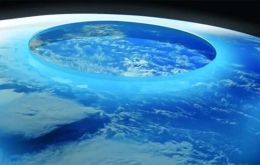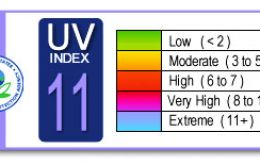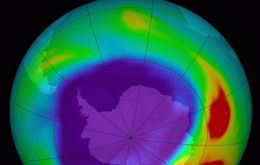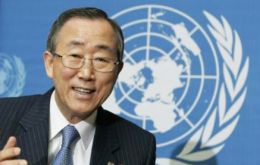MercoPress. South Atlantic News Agency
Tag: ozono
-
Saturday, December 3rd 2022 - 08:11 UTC
Ozone hole makes third appearance over Argentine Patagonia in 2022

Argentine scientists warned this week about the possible consequences on people's skin stemming from the ozone hole positioning itself over the Argentine provinces of Santa Cruz and Tierra del Fuego, which is taking place for the third time in 2022.
-
Saturday, September 16th 2017 - 07:53 UTC
Preservation of the Ozone Layer: 30th anniversary of the Montreal Protocol

The United Nations’ International Day for the Preservation of the Ozone Layer is celebrated on the 16th September every year. Commemorating the 1987 signing of the Montreal Protocol on Substances that Deplete the Ozone Layer, the day advocates activities that create awareness on topics related to climate change and ozone depletion.
-
Saturday, July 2nd 2016 - 09:20 UTC
Antarctic ozone hole is finally starting to heal according to study published in Science

Nearly thirty years after an international treaty banned the use of chlorofluorocarbons, the Antarctic ozone hole is finally starting to heal. By mid to late century, it should be fully recovered.
-
Wednesday, November 18th 2015 - 07:53 UTC
Tierra del Fuego ozone alert with 'UV radiation reaching extreme risk or harm'

Tierra del Fuego in south Argentina has sent out a warning to residents in the province that the ozone layer hole as it expands to the north, over the tip of South America continent this week, it will be reaching its maximum size with UV radiation at 12, violet or extreme alert. The information was provided by Argentina's VAG Ushuaia Station.
-
Sunday, November 9th 2014 - 09:52 UTC
Antarctic ozone hole reached annual peak 11 September and with the size of North America

The Antarctic ozone hole reached its annual peak size on Sept. 11, according to scientists from NASA and the National Oceanic and Atmospheric Administration (NOAA). The size of this year’s hole was 24.1 million square kilometers, an area roughly the size of North America.
-
Monday, March 10th 2014 - 21:05 UTC
Scientists discover new man-made gases that are depleting the ozone layer

Scientists have identified four new man-made gases that are contributing to the depletion of the ozone layer. Two of the gases are accumulating at a rate that is causing concern among researchers. Worries over the growing ozone hole have seen the production of chlorofluorocarbon (CFC) gases restricted since the mid 1980s
-
Friday, December 13th 2013 - 09:07 UTC
NASA study finds close links between climate and the ozone hole size variation

It turns out that the ozone hole may not be completely healed--at least according to new NASA data. Scientists have examined the inner workings of the ozone hole that forms annually over Antarctica and have found that declining chlorine in the stratosphere has not yet caused a recovery of the ozone hole.
-
Tuesday, October 22nd 2013 - 05:31 UTC
Ozone layer hole reaches Argentine and Chilean Patagonia

The hole in the ozone layer over Antarctica stretched for the third time this year to reach cities in the south of Argentina and Chile according to the Izaña Atmospheric research centre in Tenerife, Canary Islands.
-
Tuesday, September 17th 2013 - 06:54 UTC
UN describes the Montreal Protocol on ozone “a remarkable success story”

United Nations Secretary General Ban Ki-moon called Monday on the international community to continue efforts that will preserve the world’s ozone layer and protect the environment. In his message for the International Day for the Preservation of the Ozone Layer, Mr. Ban pointed to the Montreal Protocol as an example of how Member States are capable to work for the common good.
-
Monday, September 17th 2012 - 01:22 UTC
Ozone protection Montreal agreement, “a showcase of environmental cooperation”

An international agreement to phase out chemicals which attack the Earth’s vital ozone shield celebrates its 25th anniversary as a showcase for successful global environmental cooperation, “protecting our atmosphere for generations to come.”
